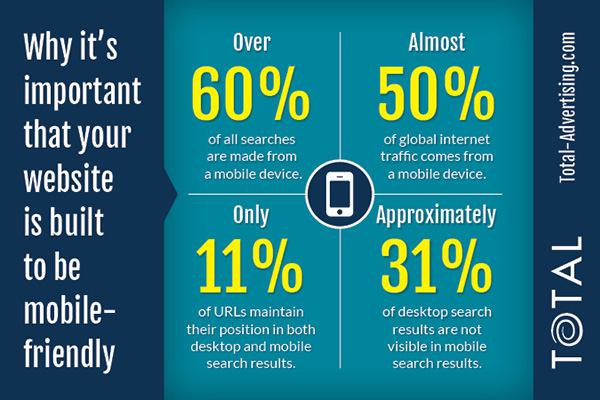
Mobile-First: What it Changes
It’s a term you hear often now concerning websites: mobile-first indexing. Beginning July 1st, 2019, you’ll be hearing it even more. Google will be crawling websites and indexing them based on their mobile versions
Now, there’s a lot of confusion pertaining to the effects this could have on business owners. Questions like: What do I need to change? Is being mobile-friendly good enough? How will my ranking change? These are questions business owners have coursing through their minds, and if your site isn’t optimized for mobile, you should be concerned too.
There’s a laundry list of things that go into creating a mobile-first site—everything from initial design to your site’s content length—and those things will now all be primary factors in determining your site’s page ranking.
Confused? To put it simply, your website’s mobile version will be what Google uses to rank in search queries–not your desktop.
Before we delve into the effects of Google’s new indexing method, we have to answer a couple of questions.
What is mobile-first indexing?
Well, it’s relatively self-explanatory. Think about the word indexing. It’s the term Google uses to define their process of ranking websites online. Desktop has been the primary version graded on in this process, but starting July 1st, Mobile website versions will become the main index. Hence mobile-FIRST indexing. It’s not eliminating desktop indexing—just prioritizing mobile.
Google is shifting its algorithm to crawl the mobile version of websites. So, if your mobile site doesn’t quite measure up to the competition, your business could suffer.
So, why is Google doing this?
The rise in mobile use is no surprise. Smartphones, tablets, and iPads have become more economical and practical for everyday life. Their ease of use and accessibility afford users with immediate information. In fact, over 60% of searches are done on a mobile device. So, it makes sense that Google is making the switch to mobile-first indexing. Therefore, sites that have adapted to the increase in mobile use will be rewarded with better page rankings and increased traffics.

What should I change?
Even if your site is responsive and nearly identical in its desktop and mobile versions, there are factors that should be optimized. Page load speed, content, structured data, and metadata are just a few of the elements that go into building a fully mobile-first site. Mobile-first sites combine search engine optimization (SEO) and search engine marketing (SEM) efforts to create a simplified user experience that is easily utilized on mobile devices.
Overwhelmed? Understandable! It’s a lot of information to process and the prospect of redesigning a site to be fully mobile-first is daunting. The web has greatly evolved over the years, and mobile-first indexing has evolved with it. Google’s new method of indexing is meant to improve user experience
The world of page rankings and indexing is a complex one that few have mastered, but your creative experts and branding specialists at TOTAL are among that few! We have embraced the lifestyle change mobile has caused, and TOTAL designs every site for mobile. Our years of experience and passion for innovation have enabled us to give our clients real results and continually improve business
Check out some of the TOTAL Team’s work to see how we can transform your website:
Blue Ocean Strategic Capital, LLC
Contact us today to schedule a free, comprehensive analysis of your website!